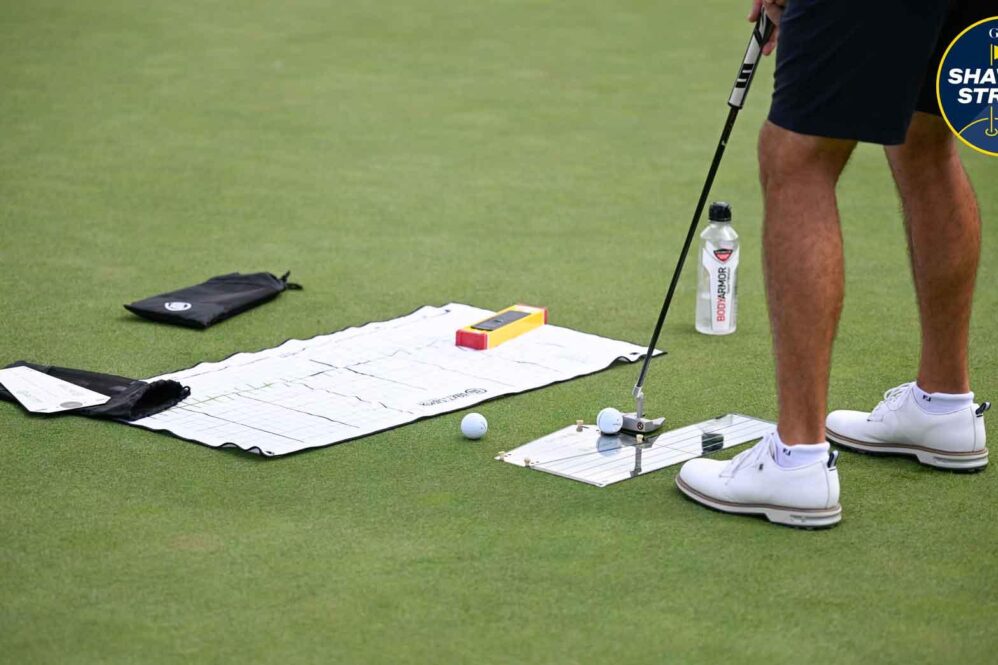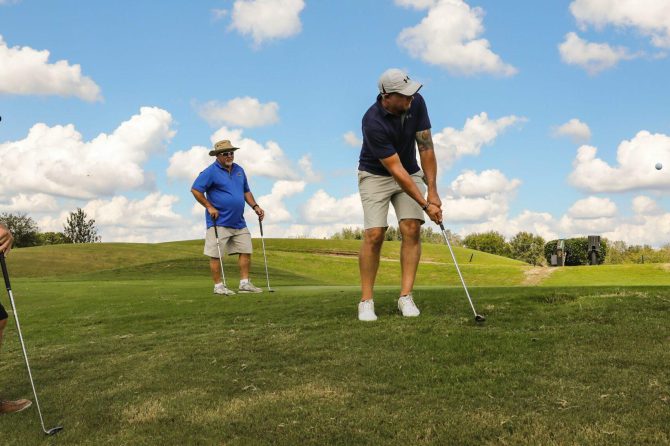Introduction
The incorporation of golf education within the holistic sports growth framework signifies a progressive shift in athletic training and youth education.As communities increasingly acknowledge the diverse advantages of engaging in sports, there is a rising demand to enrich educational systems with dynamic physical activities that foster not only physical health but also cognitive and social growth. Golf, characterized by its intricate combination of skill, strategy, and decorum, offers an excellent opportunity to fulfill this requirement. Recent efforts highlighted by organizations like Golf Canada and various educational collaborations underscore golf’s potential to impart vital life skills, nurture integrity, and develop discipline among young people (Holistic Development, 2021; Integrating Life Skills, 2015).
this article delves into the multifaceted aspects of embedding golf into educational programs while demonstrating its effectiveness in achieving holistic development objectives. By analyzing successful models alongside contemporary research findings, we will illustrate how golf transcends mere sport status to become a catalyst for personal advancement, mental health advancement, and social unity. Our goal is to emphasize the significance of an integrated approach that merges sports with education—enhancing youth development initiatives while contributing meaningfully to discussions surrounding holistic educational strategies. This integration not only enriches participants’ experiences but also highlights the essential role sports play in shaping well-rounded individuals prepared for future challenges.
The Significance of Golf Education in Holistic Athlete Growth
Golf education plays a pivotal role in athletes’ comprehensive development by enhancing their physical abilities while simultaneously nurturing cognitive, emotional, and social competencies.Through organized learning environments tailored for young athletes’ engagement with the sport holistically fosters crucial life skills such as discipline, patience, and strategic thinking. Key elements driving this all-encompassing growth include:
- Skill Mastery: Acquiring fundamental golfing techniques builds confidence and expertise.
- Tactical Understanding: Familiarity with game strategies enhances critical thinking capabilities.
- Mental Toughness: resilience developed through competitive play strengthens psychological endurance.
Additionally, initiatives like the U.S. Golf National Development Program highlight structured pathways designed to cultivate talent from grassroots levels up to elite performance stages. Utilizing the American Development Model (ADM), this program aligns athlete training with principles focused on long-term growth—ensuring personalized guidance throughout each golfer’s journey.
Main components of this structured methodology include:
- ages Tailored Training: Programs customized according to different developmental stages.
- The Focus on Injury Prevention:: Instruction on maintaining physical wellness extends athletic careers.
- The Integration of education: : Merging life skills training alongside academic learning within practice routines.
The fusion of golf education into athlete progression optimizes sporting performance while equipping them with essential life skills necessary beyond athletics.
A well-rounded curriculum emphasizing blended learning can yield significant benefits ensuring participants evolve not just as golfers but as multifaceted individuals.
This equilibrium between athleticism and personal enhancement can be effectively illustrated through the following table:
| Focus Area | Impact on Development |
|---|---|
| Technical Proficiency | Enhanced golfing ability < |
| style = “border :1 px solid #ddd;padding :8 px;” >Cognitive Skills | style = “border :1 px solid #ddd;padding :8 px;” >Improved concentration & mental agility |
| Social Competencies | Strengthened teamwork & interaction abilities |
Approaches for Integrating Golf into Multidisciplinary Training Initiatives
To successfully incorporate golf within multidisciplinary training frameworks requires collaboration among various professionals.TheTPI Team Approach<strong encourages cooperation between trainers ,physical therapists ,and coaches creating an all-encompassing support system for golfers.This partnership facilitates individual assessments regarding each golfer’s capabilities leading towards tailored programs addressing both technical proficiency along side fitness goals.
Key components integral towards achieving these objectives encompass:
- Personalized Evaluation:< strong Evaluating every athlete’s current condition along side their golfing prowess.
- Goal-Oriented Training:< strong Establishing clear targets aligning closely with individual aspirations.
- Consistent Monitoring:< strong Tracking progress regularly adjusting protocols accordingly ensuring optimal outcomes.
- Goal-Oriented Training:< strong Establishing clear targets aligning closely with individual aspirations.
Incorporation strength conditioning(S&C)training remains crucial enhancing performance reducing injury risks.Recent studies reveal significant percentages participating S&C programs highlighting importance integrating fitness regimens annually.Collaborative planning involving golfers coaches S&C specialists ensures cohesive support across all facets improving overall results.Effective strategies may involve:
- Synchronized Training Schedule:< Strong Developing cohesive calendars incorporating technical practices alongside fitness sessions .
- < Strong Skill-Specific Conditioning:< strong Designing exercises directly targeting rotational strength versatility required during gameplay .
- < Strong Feedback Mechanisms:< Strong Utilizing insights from team members refining approaches continuously.
For comprehensive experiences scientific insights biomechanics swing mechanics should be included enabling informed decisions regarding training methodologies enhancements.This integration could occur via workshops seminars led experts biomechanics allowing players grasp underlying principles movements effectively.For maximum efficacy consider implementing:
- < Strong Ongoing Learning Opportunities:< Strong Regularly organizing sessions discussing latest research findings related fitness golfing trends .
- <Strong Performance Analysis Techniques:<strong Conducting studies evaluating swings responses during gameplay .
Swinging into Success: The Power of Golf Education in Holistic Sports Progress
The Importance of Golf Education
Golf education plays a pivotal role in developing not just skilled players, but well-rounded individuals. Engaging in golf fosters discipline, focus, and respect for others, crucial traits that extend far beyond the golf course.
Key Aspects of Golf education
- Technical Skills: Basic to achieving proficiency in golf, focusing on swing mechanics, short game techniques, and course management.
- Physical Conditioning: golfers must maintain physical fitness, versatility, and cardiovascular health to perform optimally.
- Mental Fortitude: Courses ofen train players in visualization,concentration,and the mental strategies necessary for competitive play.
- Etiquette and Sportsmanship: Education in golf emphasizes respect, integrity, and camaraderie among players.
Benefits of Golf Education in Holistic Sports Development
- Enhanced Focus and Concentration: Learning to concentrate on each shot develops mental discipline beneficial in any life situation.
- Teamwork and Social Skills: Interactions during lessons and tournaments build communication skills and friendships among peers.
- Physical Health: Golf encourages an active lifestyle, promoting cardiovascular fitness and muscle strength.
- Emotional Resilience: Handling the highs and lows of the game fosters emotional control and resilience in players.
Practical Tips for Integrating Golf Education
To effectively incorporate golf education as part of holistic sports development, consider the following strategies:
- Structured Training Programs: Establish comprehensive training schedules that balance skill development, physical fitness, and mental exercises.
- Utilizing Technology: Leverage training aids, swing analysis software, and apps that enhance learning and track progress.
- Regular Assessments: Organize assessments and evaluations of skills to recognize progress and set future goals.
Case Studies in Golf Education
numerous golf programs worldwide illustrate the effectiveness of golf education. Here are two notable examples:
1.The First Tee Program
The First Tee is a national youth development organization that uses golf to teach valuable life skills. Through structured lessons, participants learn:
- Core values like honesty and respect
- Life skills such as goal setting and conflict resolution
- Fundamental golf skills to enhance participation in the sport
2. junior Golf Development Camps
many golf clubs run junior development camps that incorporate education in a fun and engaging way. They typically focus on:
- Building technical skills through interactive drills.
- Fostering friendships among participants to promote social interaction.
- Encouraging a love for the game through kind competition.
First-hand Experiences: Testimonials from Participants
Listening to those who have benefitted from golf education provides crucial insights:
Emily’s Journey
Emily started playing golf at age 12. Through her local golf academy, she learned not just how to chip and putt, but also essential skills in teamwork and sportsmanship:
”Golf taught me how to handle both victory and defeat gracefully, skills I’ve carried into my academic and personal life.” – Emily, Age 18
Mark’s Transformation
Mark attended a summer golf camp that focused on both the game and personal development:
“The camp not onyl improved my swing but gave me the confidence to lead my school’s golf team.” – Mark, Age 17
Table: Impact of Golf Education on Youth Development
Skill Developed Benefits Real-world Applications Discipline Improved focus and time management Academic performance and job efficiency Teamwork Enhanced social skills Collaboration in school and work environments Confidence Greater self-esteem Public speaking and leadership roles Mental Toughness Better stress management Handling life’s challenges effectively Conclusion: The Future of golf Education in Holistic Development
The integration of golf education into holistic sports development can significantly impact a player’s life. As more programs focus on the multifaceted benefits of golf, the sport will continue to shape individuals who are not only skilled players but also exemplary members of their communities.






